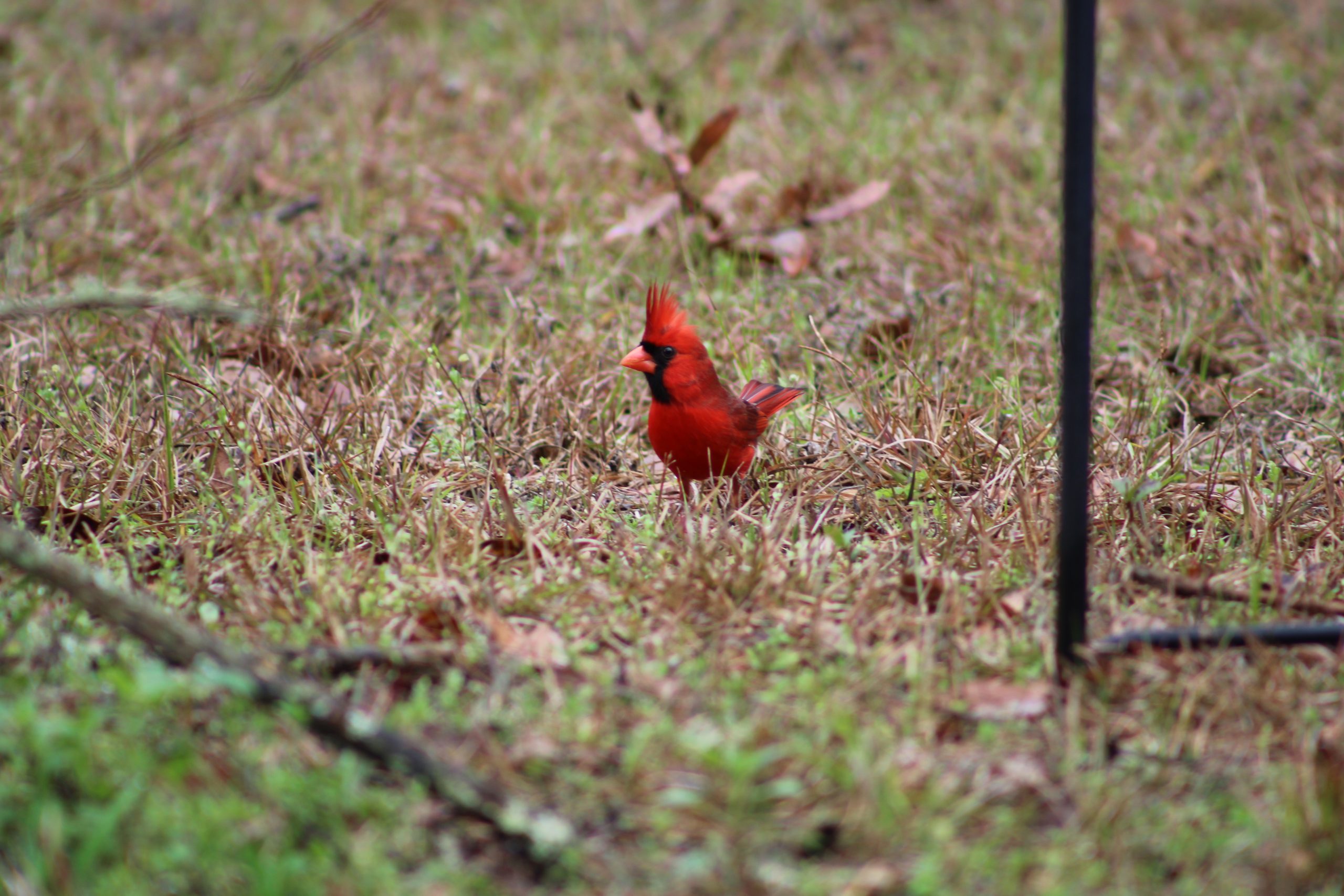Animals that are red add a pop of color to the natural world. Red animals come in all shapes and sizes.
If you are looking for a lengthy list of red animals, you are in the right place. I’ll share a summary list and then take a closer look at these red beauties below.
Key Facts:
- In nature, red usually represents a warning to go away. It could indicate that the animal is poisonous or just wants predators to think so.
- Some popular red animals include ladybugs, scarlet ibis, and red snappers.
25 Red Animals: A List
Below is a quick summary of the 25 red animals included on this list.
- Ladybug
- Northern Cardinal
- Scarlet Ibis
- Scarlet Tanager
- Hawaiian Honeycreeper
- Rainbow Boa
- Red Snapper
- Tomato Frog
- Red Milkweed Beetle
- Summer Tanager
- Cattle Killer Ant
- Red Salamander
- Scarlet Macaw
- Red Lory
- Vermilion Flycatcher
- Granular Poison Frog
- Fire Shrimp
- Sockeye Salmon
- Red Cushion Sea Star
- Christmas Island Red Crab
- Scarlet Lily Beetle
- Betta Fish
- Lobster
- Eastern Red-Spotted Newt
- Red Milk Snake
26 Red Animals: A Closer Look
Ready to learn more about the red animals included on our list? Dive into the details below.
Summer Tanager
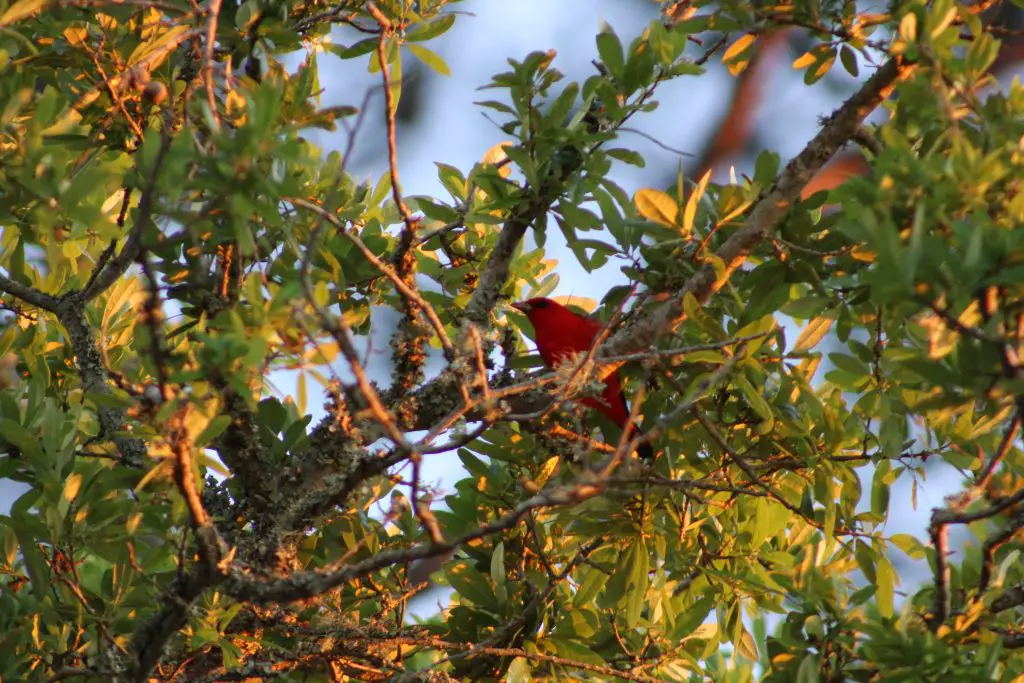
Summer Tanagers are red birds that move between North and South America. In the breeding season, which runs from late May to September or October, these birds can be found in the bottom half of North America. But in the off-season, they head to Central and South America.
I spotted the Summer Tanager in April in St. Marks Wildlife Refuge, which is a bit earlier than normal. But the bird had likely just undergone the significant journey across the Gulf of Mexico.
Ladybug
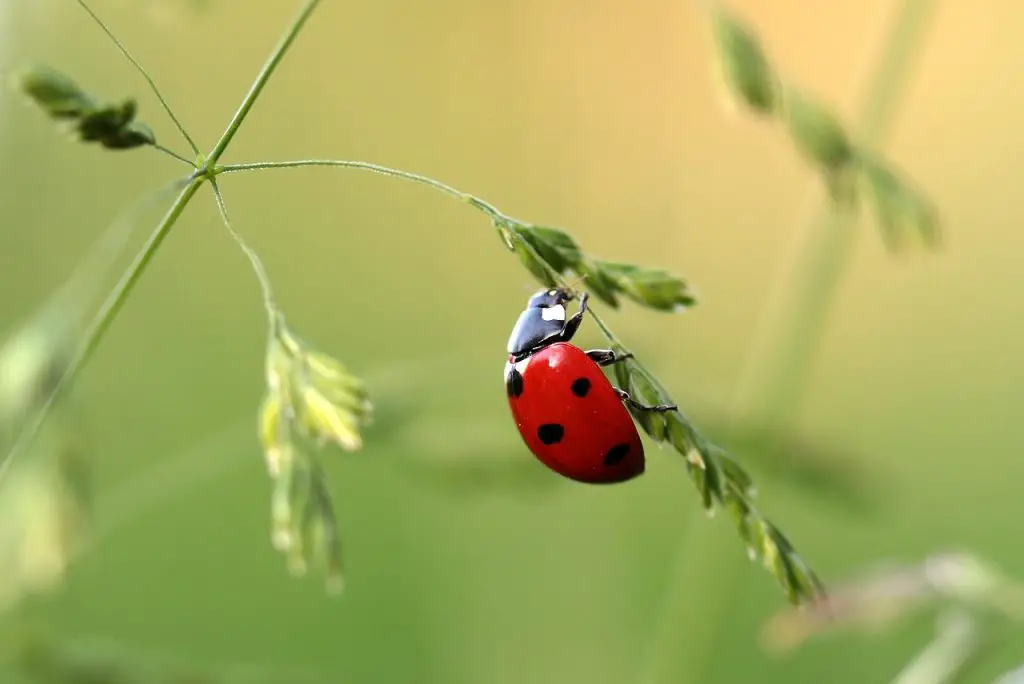
The ladybug is a charming insect celebrated for its vibrant red coloration.
This brilliant hue serves as a warning to potential predators, signaling the presence of toxic chemicals in their bodies. Ladybugs are not only visually appealing but also play a crucial role in natural pest control. They feast on aphids and other harmful insects that threaten crops. In fact, these small creatures can devour up to 5,000 aphids in their lifetime.
Beyond their pest control prowess, they are also considered symbols of good luck in many cultures around the world.
Northern Cardinal
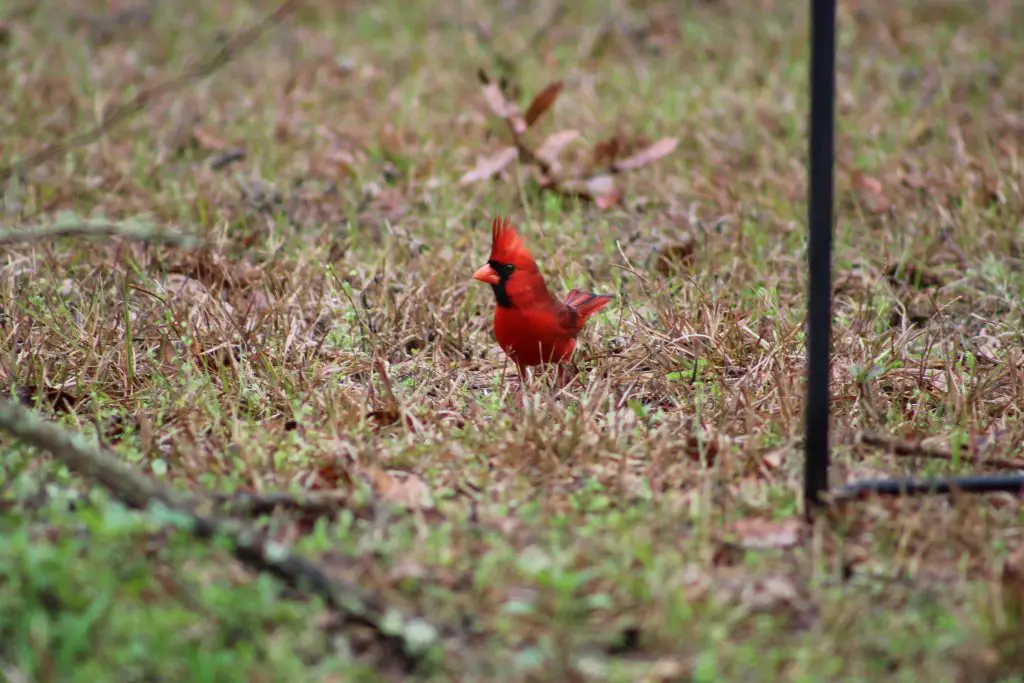
The Northern Cardinal (Cardinalis cardinalis) is a charismatic bird that adds a vibrant splash of color to its surroundings. The vivid red hue serves a dual purpose. It not only catches the eye but also plays a role in signaling the bird’s health and vitality to potential mates. Male cardinals boast the iconic bright red feathers. But females exhibit a more subdued brownish hue, allowing them to blend into their surroundings during nesting.
Scarlet Ibis
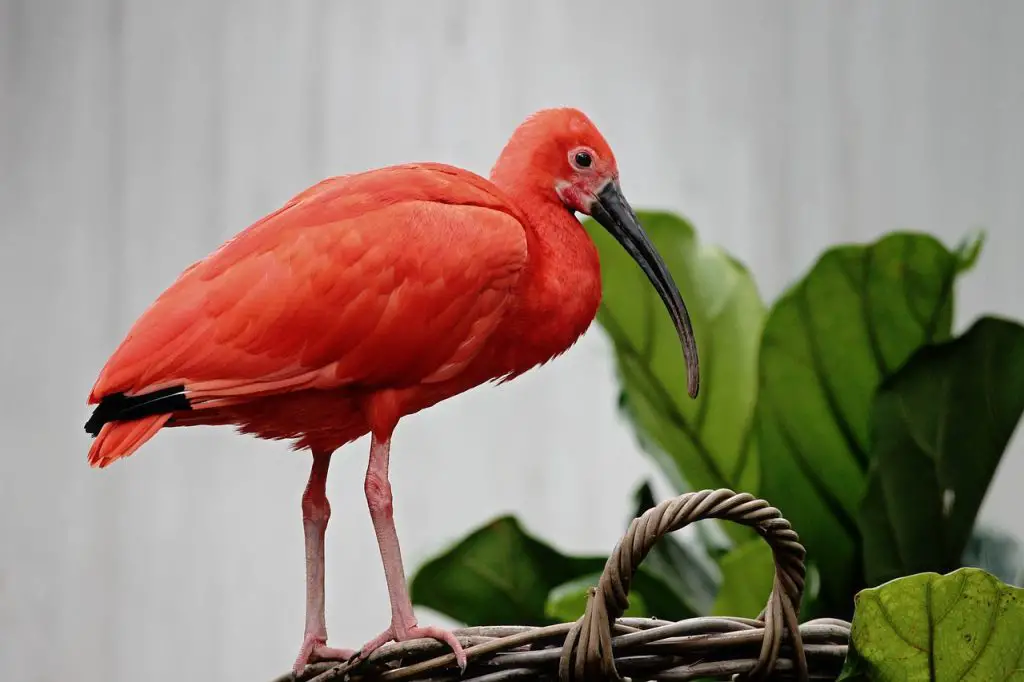
The Scarlet Ibis (Eudocimus ruber) is a bird that captivates with its intense red plumage. The stunning crimson coloration comes from the pigments in the crustaceans and other aquatic creatures that make up a significant portion of their diet.
As the ibis consumes carotenoid-rich prey, these pigments are metabolized, transforming the bird’s feathers into a brilliant shade of red, showcasing a remarkable interplay between diet and plumage. If the birds are fed a diet that doesn’t include carotenoid-rich algae, they lose their bright red plumage.
As the ibis consumes carotenoid-rich prey, these pigments are metabolized, transforming the bird’s feathers into a brilliant shade of red, showcasing a remarkable interplay between diet and plumage. In flight, their scarlet wings create a mesmerizing display against the backdrop of mangroves and wetlands.
Scarlet Tanager
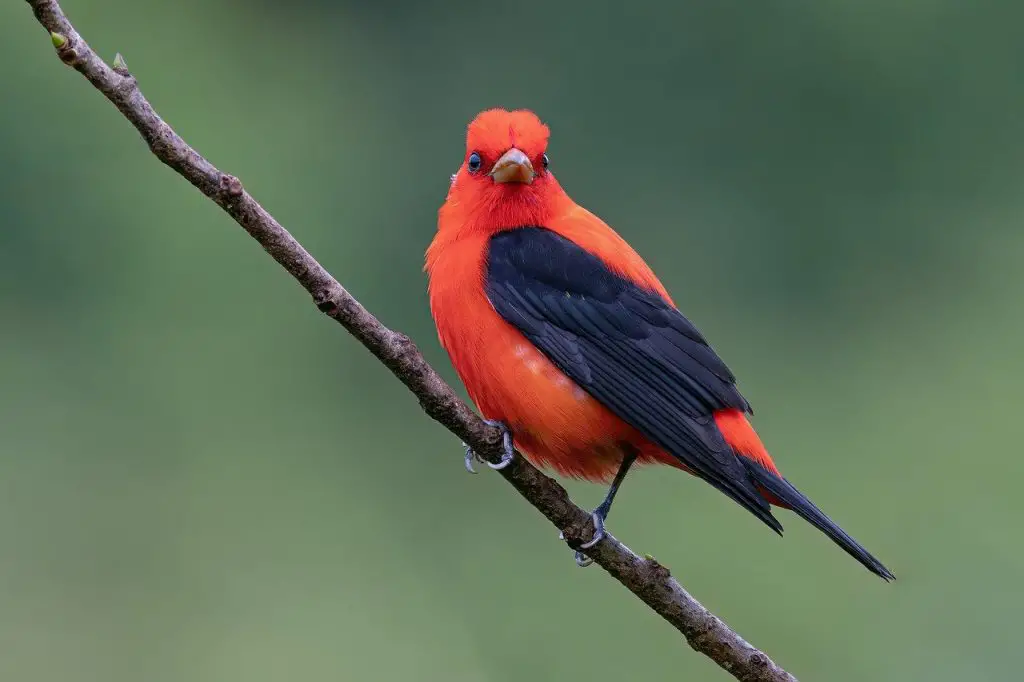
The Scarlet Tanager (Piranga olivacea) is a striking bird celebrated for its vibrant red plumage, particularly in males. The intense red coloration serves as a visual signal during the breeding season, indicating vitality and fitness to potential mates. Male tanagers showcase a brilliant scarlet hue. But females exhibit a more subdued yellow-green, allowing them to blend seamlessly into their leafy habitats.
The birds winter in South America and return to North America for the breeding season.
Hawaiian Honeycreeper
The Hawaiian Honeycreeper, scientifically known as Drepanis spp., encompasses a group of stunning bird species found exclusively in the Hawaiian Islands. One notable member is the ‘I’iwi (Drepanis coccinea), celebrated for its vibrant scarlet plumage.
The ‘I’iwi relies on its specialized, curved bill to feed on nectar from native Hawaiian flowers. The protected bird forms a vital link in the island’s unique ecosystem by facilitating pollination. Tragically, many Hawaiian Honeycreepers face significant threats, primarily due to habitat destruction, introduced diseases, and invasive species.
Rainbow Boa
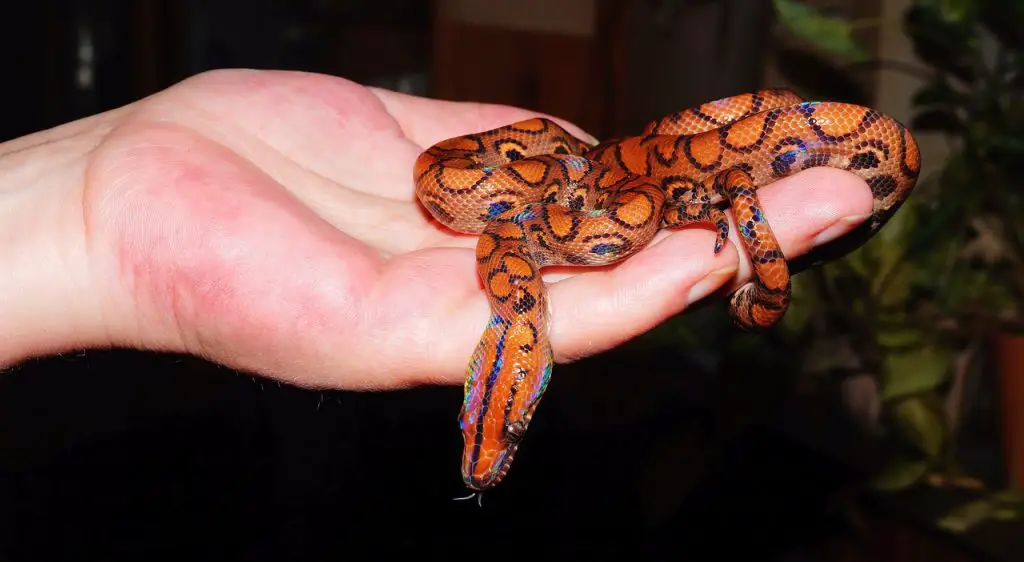
The Rainbow Boa (Epicrates cenchria) is a mesmerizing snake renowned for its iridescent, rainbow-like sheen, particularly visible when exposed to light. The snakes are not inherently red. But they earn their place in the spectrum of red animals due to their vibrant reddish-brown base color. This hue, coupled with the glossy appearance, is a result of microscopic ridges on the scales that refract light, creating a stunning optical effect. Beyond its captivating appearance, the red coloration provides effective camouflage in the rainforest undergrowth where these boas are typically found.
Red Snapper
The Red Snapper (Lutjanus campechanus) is a prized fish renowned for its vibrant reddish-pink hue. The striking coloration is attributed to a combination of pigments in their diet and the oxygenated blood circulating through their capillaries. This visual trait not only adds to the appeal of the Red Snapper but also plays a role in signaling their overall health and fitness within their marine ecosystems.
Red Snappers are highly sought after in recreational and commercial fishing, contributing to their economic significance. However, their popularity has led to overfishing in some regions, prompting concerns about their sustainability. Conservation measures, such as size and catch limits, are essential to ensure the long-term health of Red Snapper populations and the preservation of their vital role in marine ecosystems.
Tomato Frog
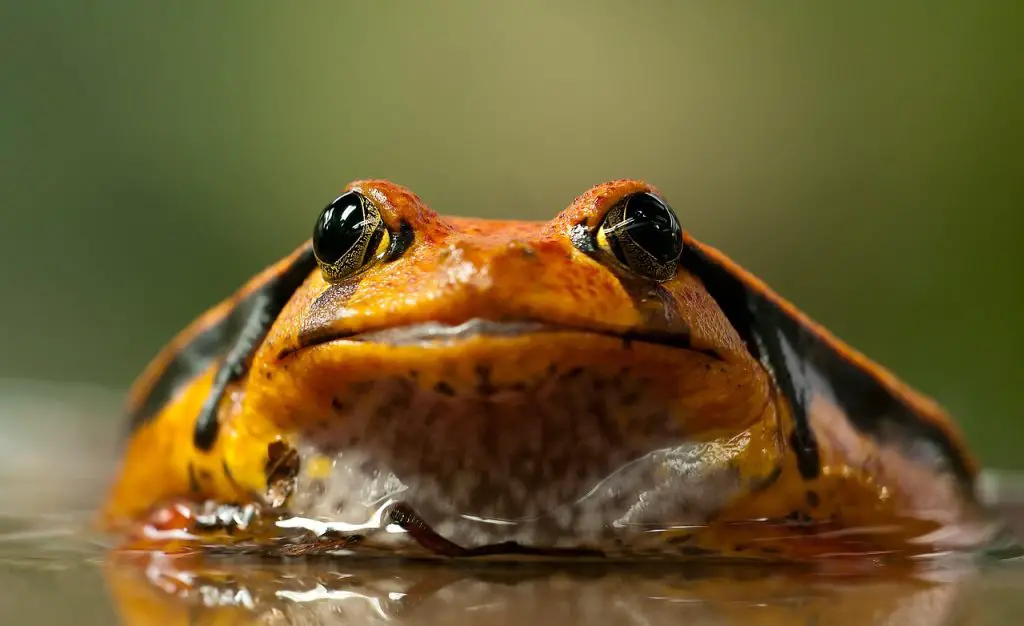
The Tomato Frog is a captivating amphibian that earns its name from its vibrant red coloration reminiscent of a ripe tomato. This striking hue serves as a warning to potential predators, signaling the presence of toxins in the frog’s skin. These toxins, secreted as a defense mechanism, make the Tomato Frog an unpalatable meal for would-be attackers. Beyond their bold red coloring, these frogs are known for their stout bodies, characterized by a robust appearance, large mouth, and short limbs.
Tomato Frogs possess a fascinating ability to inflate their bodies when threatened, making them appear larger and potentially deterring predators.
Red Milkweed Beetle
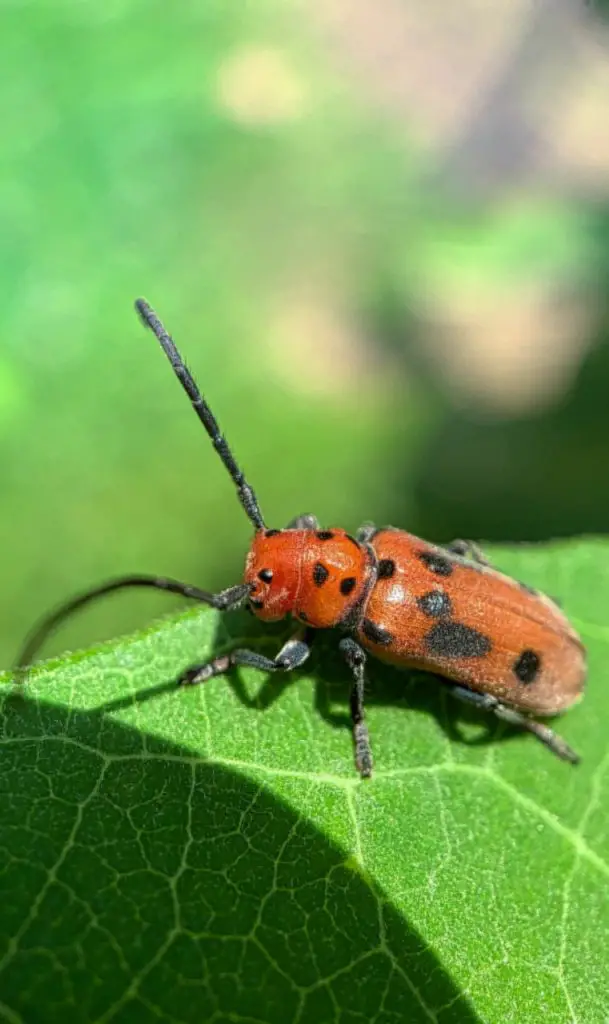
The Red Milkweed Beetle’s vibrant hue serves as a warning to potential predators, indicating the presence of toxic compounds obtained from the milkweed plants they consume during their larval stage. The adult beetles retain these toxins, making them unappealing to predators and underscoring the significance of their specialized diet in shaping their distinct appearance.
The beetle’s relationship with the milkweed plant seems symbiotic. In exchange for a home, the beetles play a role in pollination as they feed on milkweed flowers, aiding in the plant’s reproduction.
Velvet Ant
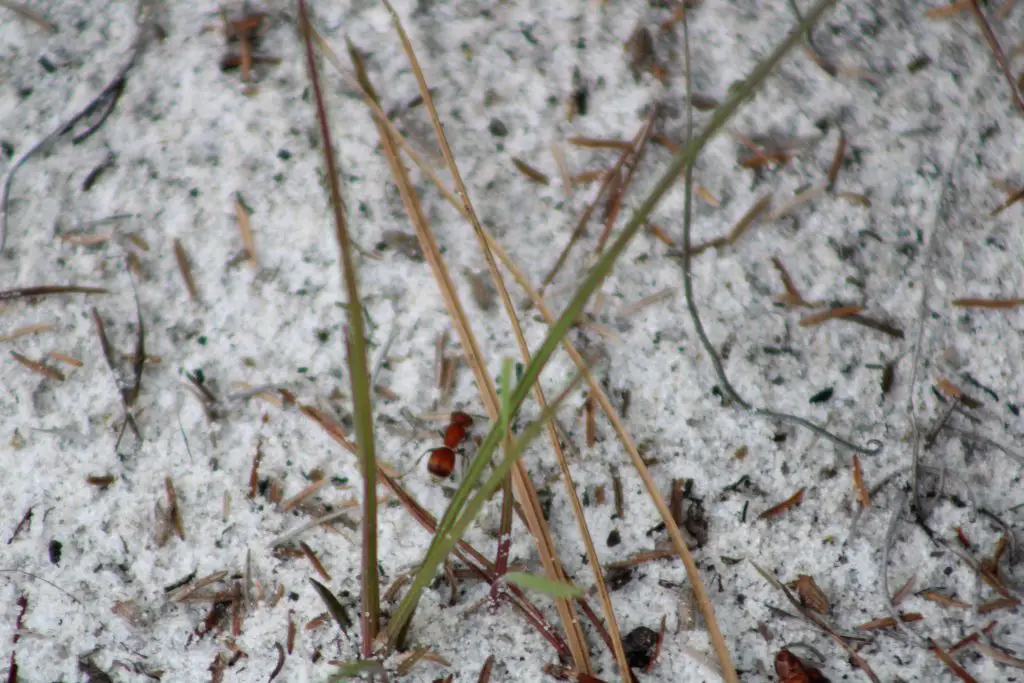
Velvet ants go by the name Cattle Killer ants in my neck of the woods. But despite the name, velvet ants are not true ants but rather wingless wasps, and their striking red coloration serves as a warning to potential predators. This vibrant hue signals the presence of potent toxins in their exoskeleton, making them unpalatable and deterring predators from attempting to prey on them.
Velvet ants have a fuzzy appearance, resembling velvet, and their bright red or orange coloration. The females, which are wingless, are often more brightly colored than the males.
Red Salamander
The Red Salamander (Pseudotriton ruber) is a striking amphibian with vibrant red or orange coloration. This eye-catching hue serves as a warning signal, indicating the presence of noxious skin secretions that deter potential predators. Found primarily in the eastern United States, the red salamander’s distinctive color provides effective camouflage amid the leaf litter and forested habitats where it resides.
Scarlet Macaw
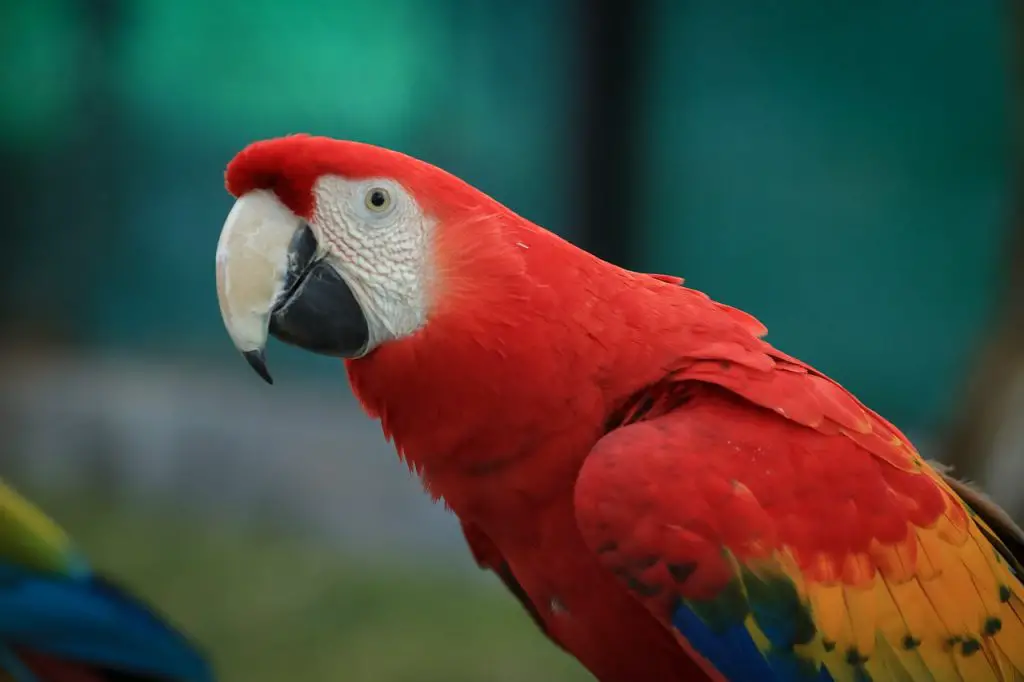
The Scarlet Macaw is a majestic parrot that graces the tropical rainforests of Central and South America with its vibrant red plumage. The stunning red coloration of these macaws is primarily due to the presence of carotenoid pigments in their diet, derived from fruits and nuts. The scarlet macaw’s distinct appearance serves multiple purposes, from attracting mates to communicating within their social groups through a combination of vocalizations and vibrant visual displays.
The highly intelligent birds can mimic human speech. But their beauty and brains make them a target of poachers who sell them into the pet trade.
Red Lory
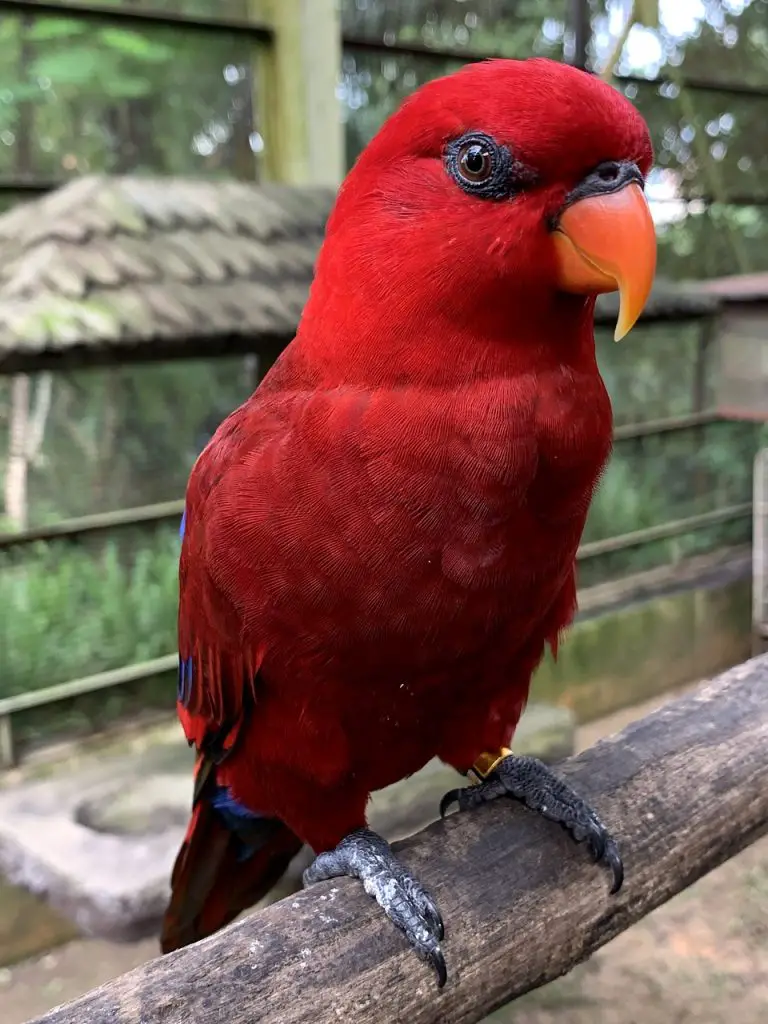
The Red Lory (Eos bornea) is a captivating parrot species with vibrant red plumage. The intense red coloration is a result of the pigments in the fruits and nectar that constitute a significant part of its diet. Found in the rainforests of Indonesia, the red lory’s vivid feathers not only contribute to its visual appeal but also serve as a form of camouflage amid the lush foliage where it dwells.
Vermilion Flycatcher
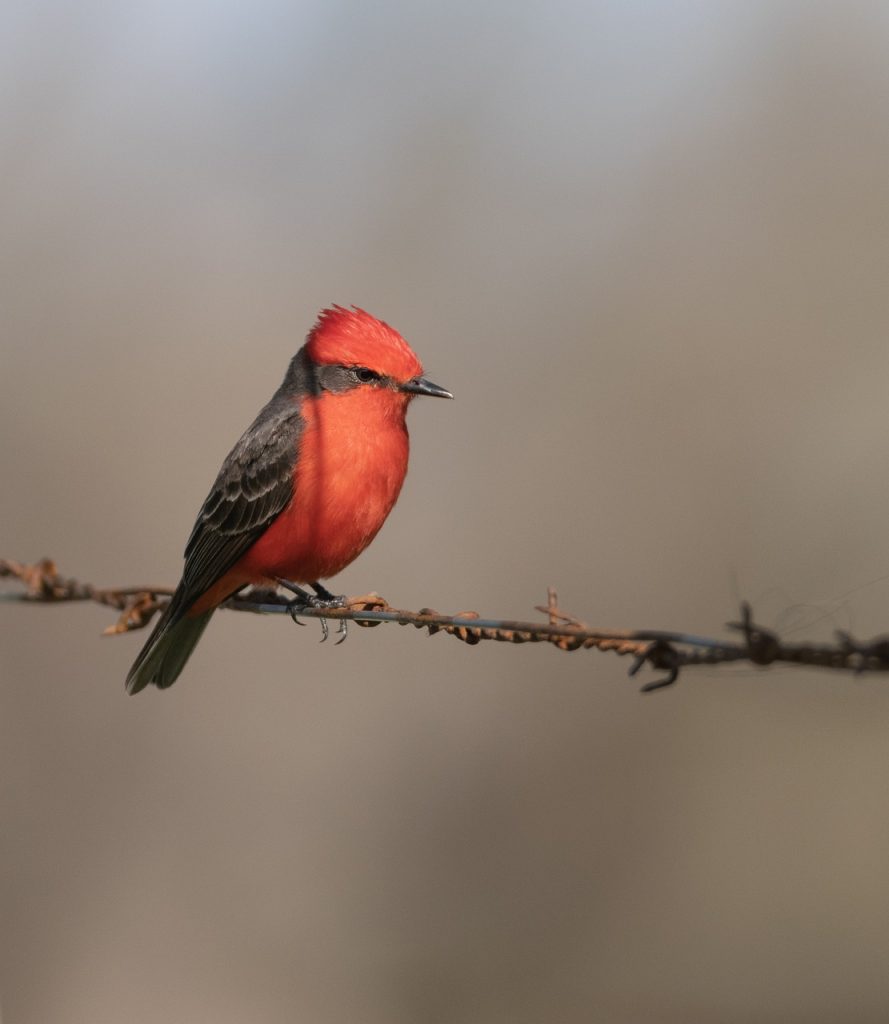
The Vermilion Flycatcher, sometimes called a Scarlet Flycatcher, is a small to medium-sized bird with a sleek build, characterized by its vibrant red or vermilion plumage, contrasting with its dark wings and tail.
The striking red coloration, especially prominent in males during the breeding season, plays a pivotal role in attracting mates. Derived from pigments in their diet, these vibrant feathers serve as a visual display of the flycatcher’s overall health and vitality.
Granular Poison Frog
The Granular Poison Frog (Oophaga granulifera) is an amphibian with vibrant red coloration, signifying its potent toxicity. Native to the rainforests of Central and South America, these frogs obtain their striking red hues from toxic alkaloids present in their diet, primarily consisting of small arthropods. The bright color serves as a visual warning to potential predators, highlighting the lethal consequences of attempting to consume these toxic amphibians.
The granular poison frog is relatively small, typically reaching lengths of around 2 to 4 centimeters. These frogs have interesting parental care behaviors, as females lay their eggs on land and carry hatched tadpoles on their backs to water-filled bromeliad plants.
Fire Shrimp
The Fire Shrimp is a marine crustacean with a bright red coloration. Found in coral reefs of the Indo-Pacific region, the intense red hue of the fire shrimp is attributed to pigments obtained from its diet, which includes small invertebrates and detritus. This striking coloration not only enhances their aesthetic appeal but also aids in their camouflage among the coral formations where they thrive.
These crustaceans set up cleaning stations to groom other fish by removing parasites.
Sockeye Salmon
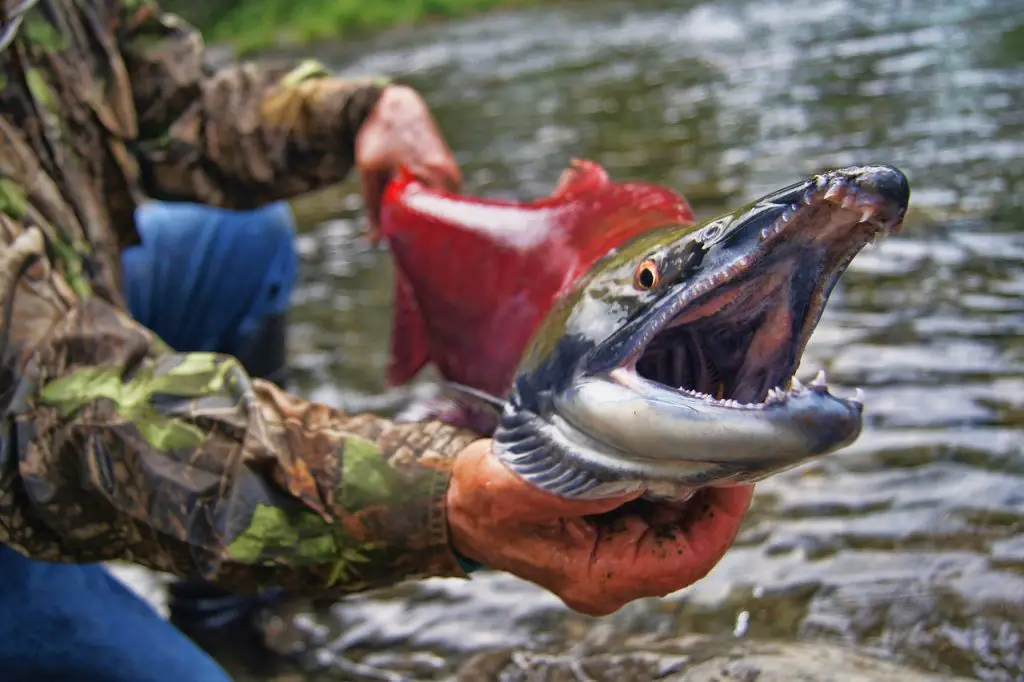
The Sockeye Salmon (Oncorhynchus nerka) is a remarkable fish species known for its vibrant red coloration during the spawning season. This striking hue is a result of carotenoid pigments obtained from their diet, mainly consisting of krill and shrimp. As sockeye salmon return to their natal streams and rivers to spawn, the intense red coloration serves as a visual signal, indicating their readiness for reproduction and attracting potential mates.
These hardy fish navigate vast ocean expanses before returning to their freshwater birthplaces to complete their life cycle.
Red Cushion Sea Star

The Red Cushion Sea Star (Oreaster reticulatus) is a marine creature that stands out in vibrant hues against the ocean floor. Their intense red coloration comes from pigments derived from their diet, which includes algae, detritus, and other organic matter.
The sea stars help control algae growth, preventing it from overtaking coral and competing for space.
Christmas Island Red Crab
The Christmas Island Red Crab is an iconic species that inhabits Christmas Island in the Indian Ocean. Renowned for their stunning red coloration, the adult red crabs embark on a remarkable annual migration from the forest to the coastline for breeding. The bright red hue is attributed to carotenoid pigments obtained from their diet of fallen leaves and fruits, providing effective camouflage within the island’s dense vegetation.
During their synchronized migration, millions of individuals traverse the island, creating a spectacular natural phenomenon.
Scarlet Lily Beetle
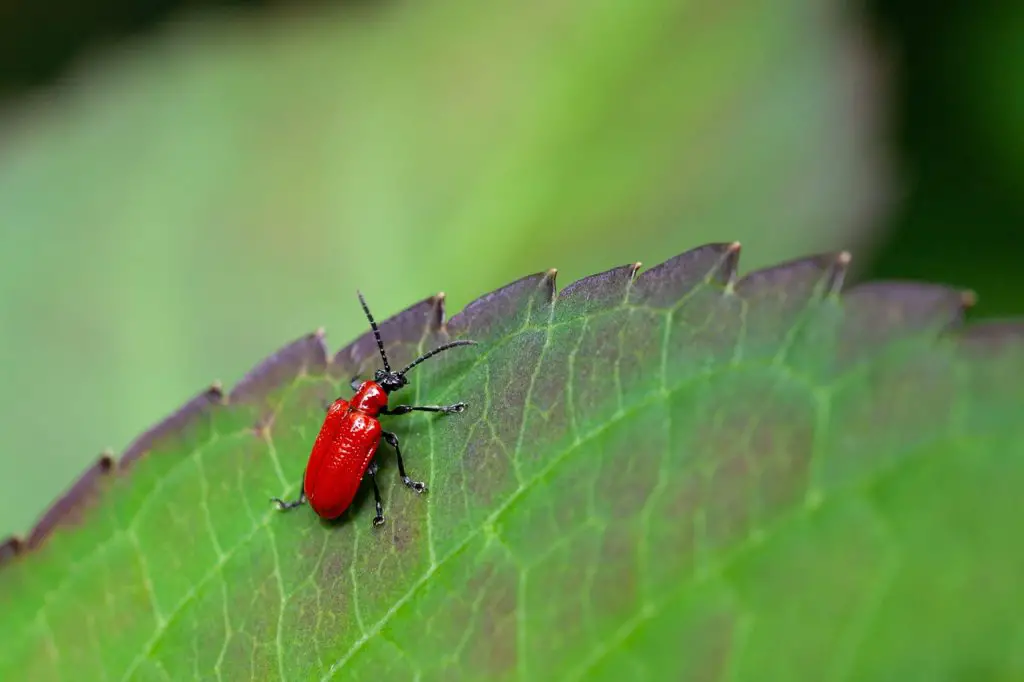
The Scarlet Lily Beetle (Lilioceris lilii) is a notorious insect that lives in gardens and fields, particularly feeding on lilies. The vivid red coloration of this beetle serves as a warning to potential predators, signaling its unpalatability due to toxic compounds present in the lilies it consumes. The beetle’s bright red appearance is not only a defense mechanism but also aids in attracting mates during the breeding season.
The bugs get their name from their voracious appetite for lilies, which makes them a menace to gardeners everywhere.
Betta Fish
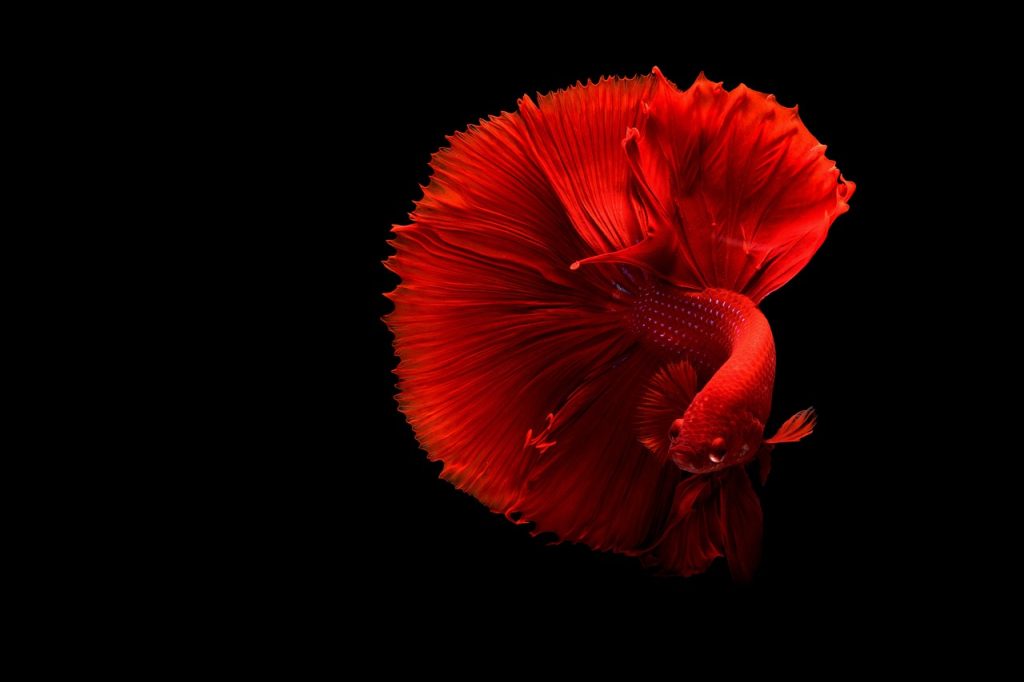
The Betta Fish, or the Siamese Fighting Fish, is a freshwater fish known for its vibrant and varied coloration. While not all of these fish are red, many possess striking shades of red. The red coloration in bettas, as well as other hues, is primarily due to pigments in their skin cells called chromatophores. The betta’s ability to showcase a diverse range of colors has made it a popular choice among aquarium enthusiasts.
Lobster
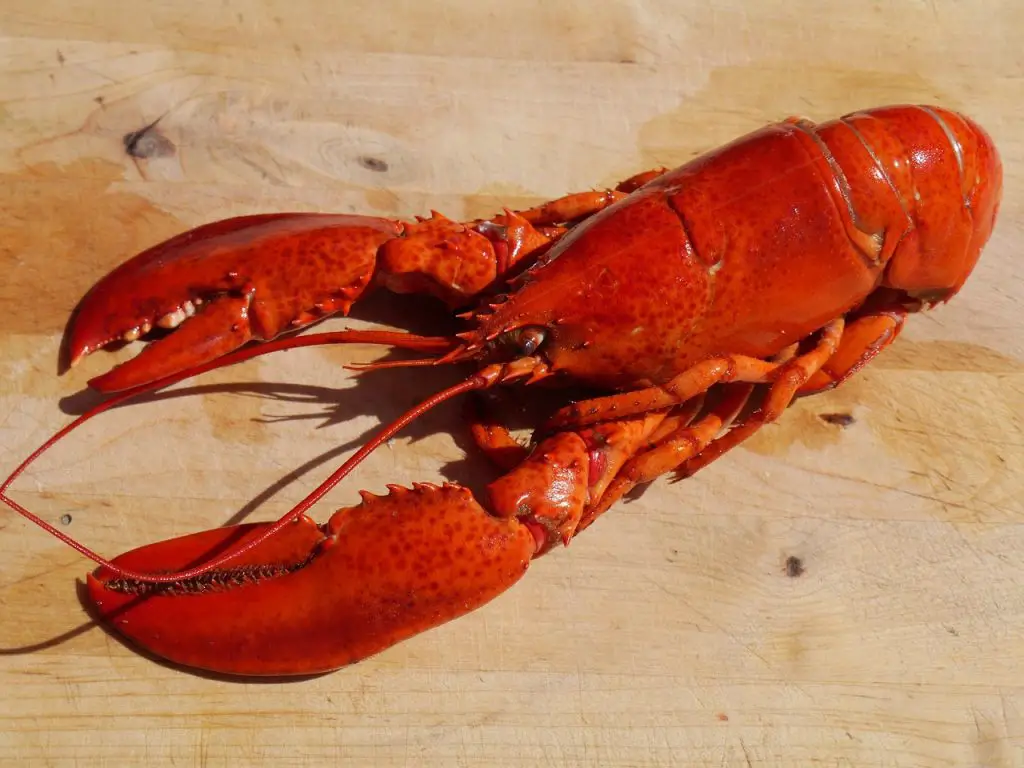
The American Lobster, scientifically named Homarus americanus, is a marine crustacean that plays a significant role in the culinary world. While lobsters are typically a mottled greenish-brown color, their shells contain pigments like astaxanthin, which turns red when cooked. This transformation is the reason lobsters are often associated with a vibrant red hue when served as a delectable seafood dish.
Eastern Red-Spotted Newt
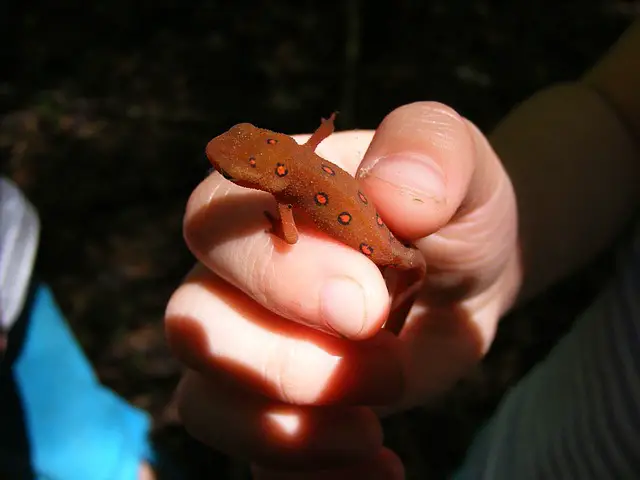
The Eastern Spotted Newt (Notophthalmus viridescens) undergoes a fascinating color transformation during its life stages, showcasing a striking red hue in its terrestrial eft phase. This red coloration serves as a warning signal, signifying the presence of toxins that deter potential predators. As these newts transition from aquatic larvae to terrestrial efts before eventually becoming aquatic adults, their vibrant red appearance plays a crucial role in their survival strategy.
Red Milk Snake
The Red Milk Snake (Lampropeltis triangulum syspila), is a visually striking serpent celebrated for its vibrant red, black, and yellow bands. The red coloration in these milk snakes is an adaptation called aposematism, which signals to potential predators that they are not to be trifled with. This color pattern mimics the venomous coral snake, providing the milk snake with protection through mimicry.
Red Animals: Frequently Asked Questions
What animal is red with spots on it?
The animal that is commonly red with spots is the ladybug beetle. Ladybugs are small beetles belonging to the Coccinellidae family. Their distinct red coloration often features black spots on their wing covers.
Why are some animals red?
The red coloration in animals can serve various purposes, depending on the species. In some cases, red functions as a warning signal, indicating that the animal is toxic or distasteful to potential predators. This is known as aposematism, and it’s a strategy employed by certain insects, amphibians, and reptiles to deter predators.
Additionally, red hues may play a role in attracting mates during the breeding season. In general, a brighter red represents a visual cue for reproductive fitness.
